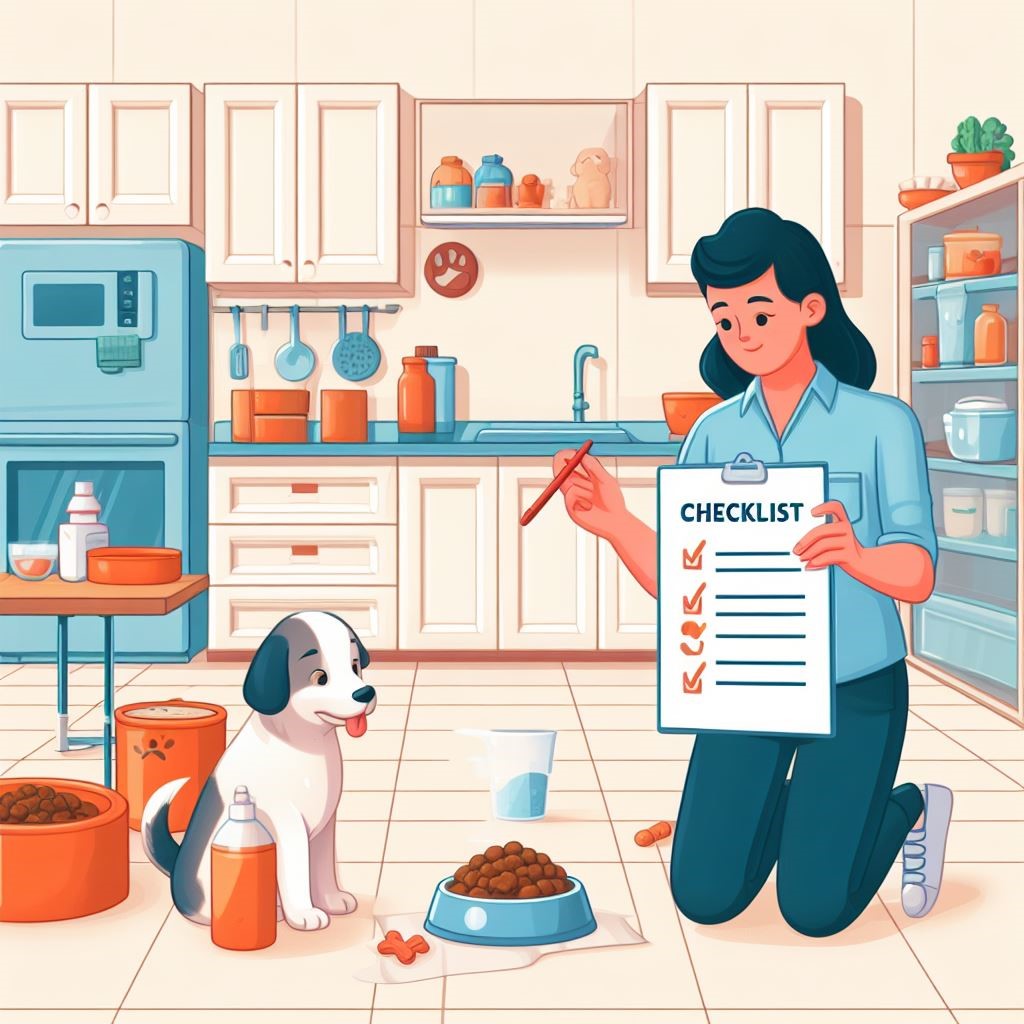
Introduction
The conscientious pet owner recognizes the cardinal importance of elevating dog food safety as a paramount concern within the purview of responsible pet care. A palpable surge in concern within the pet owner community underscores the imperative nature of this discourse.
Opting for High-Quality Canine Cuisine
Embarking on the journey of safeguarding your dog’s well-being commences with an exhaustive examination of nutritional labels. A discerning eye is cast upon ingredients, favoring high-quality proteins, wholesome grains, and indispensable nutrients. The prudent choice involves eschewing fillers and by-products in favor of premium alternatives that unequivocally prioritize canine health.
Impeccable Storage Practices
The preservation of canine gastronomic excellence necessitates a judicious investment in hermetic containers. These vessels serve as bastions against the infiltration of moisture and air, preserving the nutritional zenith of dog food. An unwavering commitment to optimal storage conditions, sheltering dog food from direct sunlight and environmental vicissitudes, ensures the enduring vitality of your pet’s sustenance.
Decoding Expiry Dates
In the nuanced landscape of pet nutrition, an unerring commitment to scrutinizing expiry dates becomes non-negotiable. A symphony of diligence and discernment is required to detect subtle alterations in texture or olfactory cues, indicative of potential degradation in dog food quality. The conscientious pet owner exercises unwavering scrutiny to uphold the highest standards of canine nutrition.
Pristine Feeding Etiquette
The sanctity of the canine feeding ritual is preserved through the meticulous upkeep of feeding utensils. Cross-contamination risks are obviated through a disciplined adherence to sterile practices. This meticulous approach, though seemingly mundane, stands as a bulwark against potential bacterial growth, safeguarding the health of your cherished companion.
Introducing New Foods Gradually
The introduction of novel elements into your dog’s dietary repertoire demands a methodical, phased approach. This approach not only mitigates digestive issues but also serves as a sentinel against potential allergic responses. The savvy pet owner observes, adapts, and consults veterinary expertise during this dietary evolution.
Routine Veterinary Oversight
A cornerstone of holistic canine health lies in the commitment to routine veterinary check-ups. Beyond the purview of general health assessments, these sessions serve as forums to discuss the nuances of your dog’s nutritional needs. The symbiosis between pet owner and veterinary professional ensures a well-informed approach to canine nutrition.
Precision in Portion Management
The art of portion management emerges as a critical facet in the tapestry of canine nutrition. The discerning pet owner tailors portions with precision, factoring in age, weight, and activity level. This bespoke approach serves as a bulwark against the deleterious effects of overfeeding, fostering a harmonious balance in canine well-being.
Discerning Treat Selections
The discerning pet owner scrutinizes commercial treats with a discerning eye, emphasizing choices that align with canine well-being. Elevating the experience, the creation of bespoke treats using meticulously crafted recipes adds a personalized touch to the canine culinary repertoire.
Potential Dangers Lurking at Home
Within the seemingly innocuous confines of home, potential hazards to canine health lurk. Heightened awareness about items toxic to dogs, ranging from certain foods to household cleaners, becomes imperative. Designating food-free zones and exercising vigilance become non-negotiable tenets of responsible pet ownership.
Identification and Mitigation of Common Allergens
Navigating the intricate terrain of common allergens in canine cuisine necessitates astuteness. The proactive avoidance of known allergens, coupled with vigilant symptom monitoring, ensures the preemptive management of potential allergic reactions. This proactive stance stands as a testament to the pet owner’s commitment to canine well-being.
Hydration as a Cornerstone of Well-being
The advocacy for consistent water intake transcends a rudimentary consideration to assume the status of a cornerstone in canine well-being. The observant pet owner ensures unfettered access to fresh water, especially during climatic variations or heightened physical activity, precluding the specter of dehydration-related complications.
Educating All Household Members
The dissemination of canine nutritional guidelines throughout the household is an act of paramount importance. This educational initiative extends to the youngest members, fostering an environment where responsible and informed feeding practices become second nature.
Regular Sanitization of Feeding Environments
Instituting a culture of regular cleaning rituals within the canine feeding ecosystem emerges as an indispensable practice. The conscientious pet owner invests time and effort in washing food and water bowls with pet-safe soap, elevating the hygiene standards of the immediate canine environment.
Conclusion
In summation, the assurance of dog food safety at home transcends the routine; it embodies a synthesis of informed choices and sustained practices. The journey entails a multifaceted commitment to high-quality choices, discerning practices, and unwavering vigilance—a testament to the pet owner’s dedication to the optimal well-being of their cherished companion.
FAQs
- How often should I clean my dog’s food and water bowls?
Regular cleaning, ideally daily, helps prevent bacterial growth. Wash bowls with pet-safe soap to ensure hygiene. - Can I introduce homemade food to my dog’s diet?
Yes, but do it gradually. Consult your vet for guidance on incorporating homemade meals and treats into your dog’s diet. - What are common signs of food allergies in dogs?
Symptoms include itching, redness, vomiting, diarrhea, and changes in behavior. Consult your vet if you observe these signs. - Is it essential to check the expiration date on dog food?
Yes, always check the expiry date. Consuming expired food can be harmful to your dog’s health. - How can I encourage my dog to drink more water?
Ensure fresh water is always available. Some dogs prefer running water, so consider a pet fountain to entice them to drink more.